NARC and CIMMYT survey off-season wheat in Nepal
A team from CIMMYT and the Nepal Agricultural Research Council (NARC) recently conducted the first extensive monitoring of off-season wheat crops, in the Mude and Nigale (Sindhupalchok district) and Ziri region (Dolakha district) of Nepal. The survey was suggested in light of the risk posed by a major inoculum load of yellow rust spreading from the hills of Nepal to the north-western Gangetic plains of India and the Terai of Nepal. By studying the presence of off-season wheat crops and barberry plants (an alternate host of wheat rusts), the team hoped to gain a better understanding of the magnitude of their role in yellow rust epidemics in the main season.
During the trip of 23-24 August, the group (made up of Sarala Sharma, plant pathology division, NARC; Madan Raj Bhutta, NARC; and Arun Joshi, CIMMYT wheat breeder) found that off-season wheat was grown on around 5,000ha, with farmers taking two wheat crops per year. Whereas previously the popular ‘red wheat’, Sonalika, was grown, most farmers now grow an unknown variety of white wheat. Farmer Kaila Shrestha said that most producers prefer a variation with a shorter duration (120 days) for the off season, as opposed to the main, winter season, when they grow varieties with a longer duration (135-140 days). Many of the farmers surveyed expressed interest in trying new varieties and learning the skills of seed production, and NARC and CIMMYT hope to disseminate new varieties to these areas next growing season.
Approximately 80% of wheat in the surveyed area was in the tillering stage, with sporadic presence of selfgrown adult plants. Yellow rust was found in some fields, and in some barberry plants, which numbered thousands in the 200km route between Kathmandu and Ziri. Substantial rainfall during the survey meant that most rust appeared washed out, but samples were successfully collected from more than a dozen sites, and will be analyzed at the Khumaltar station of the NARC. It is hoped that a more comprehensive study can be conducted in October (in collaboration with the Indian Council of Agricultural Research), when the crops will be at a more suitable stage for analysis (in term of plant development and inoculums load).
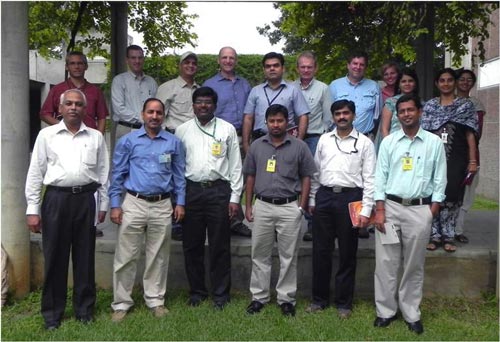
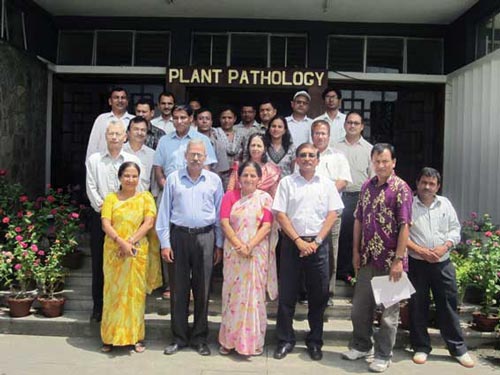
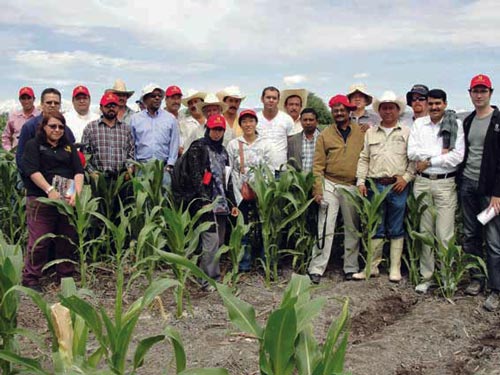 “It is very difficult to find conservation agriculture machinery. You have to go to China or India to get it,” said Mahesh Kumar Gathala, new CIMMYTBangladesh-based cropping systems agronomist for South Asia. Gathala, a native of India, was just one of the 15 participants invited to attend a five-week conservation agriculture course at CIMMYT-El Batán, Mexico, where improving machinery and professional capacity were hot topics.
“It is very difficult to find conservation agriculture machinery. You have to go to China or India to get it,” said Mahesh Kumar Gathala, new CIMMYTBangladesh-based cropping systems agronomist for South Asia. Gathala, a native of India, was just one of the 15 participants invited to attend a five-week conservation agriculture course at CIMMYT-El Batán, Mexico, where improving machinery and professional capacity were hot topics.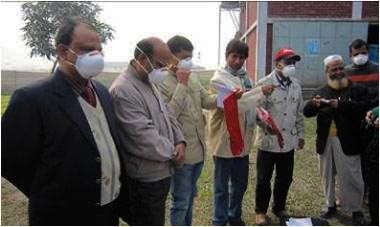 In Bangladesh, approximately 350 species of weeds have been identified, and in Asian countries, these weeds cause roughly 33% of total crop loss. Because of the threat posed by weeds, the use of herbicides in Bangladesh has risen rapidly in the past few years. Herbicides are a great asset to protect crops from weeds; however when not used properly, they can be dangerous to human health or lead to the premature development of herbicide-resistant weeds.
In Bangladesh, approximately 350 species of weeds have been identified, and in Asian countries, these weeds cause roughly 33% of total crop loss. Because of the threat posed by weeds, the use of herbicides in Bangladesh has risen rapidly in the past few years. Herbicides are a great asset to protect crops from weeds; however when not used properly, they can be dangerous to human health or lead to the premature development of herbicide-resistant weeds.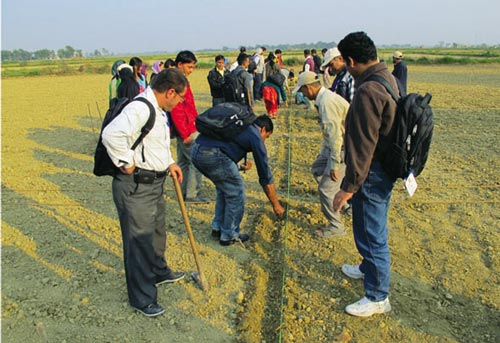 The Wheat Research Center (WRC) in Bhairahawa welcomed 20 early and mid-career wheat breeders from four CSISA countries (Bangladesh, India, Nepal, and Pakistan) to its scenic campus in Nepal’s Terai region to participate in a two-week regional Wheat Improvement and Pathology course which was organized in collaboration with Nepal Agricultural Research Council (NARC) from 29 November- 12 December 2010.
The Wheat Research Center (WRC) in Bhairahawa welcomed 20 early and mid-career wheat breeders from four CSISA countries (Bangladesh, India, Nepal, and Pakistan) to its scenic campus in Nepal’s Terai region to participate in a two-week regional Wheat Improvement and Pathology course which was organized in collaboration with Nepal Agricultural Research Council (NARC) from 29 November- 12 December 2010. “NL 3063 yielded 7% higher than the current most popular variety, Gautam, in three years of multi-location testing in Nepal,” said Madan Raj Bhatta, wheat breeder at Nepal Agricultural Research Council (NARC), adding that it also performed better than other varieties in on-farm testing.
“NL 3063 yielded 7% higher than the current most popular variety, Gautam, in three years of multi-location testing in Nepal,” said Madan Raj Bhatta, wheat breeder at Nepal Agricultural Research Council (NARC), adding that it also performed better than other varieties in on-farm testing. EL BATAN, 06 September 2010—On a historic day for CIMMYT, Director General Thomas A. Lumpkin and Dr. S Ayyappan, Director General of the Indian Council of Agricultural Research (ICAR), signed a joint declaration of intent in the presence of H.E. Mr. Sharad Pawar, Honorable Minister of Agriculture of India, to establish the Borlaug Institute for South Asia (BISA). Located in India but serving the entire region, BISA will constitute a state-of-the-art, international agricultural research and development organization that applies cutting-edge technologies to improve cropping systems and help farmers address current and emerging challenges to food security such as climate change, natural resource scarcities, and rising market demand. According to the declaration, the new institute commemorates the “…fond and respectful memory of the late Dr. Norman Borlaug, and his contribution to the Green Revolution of India and of South Asia.”
EL BATAN, 06 September 2010—On a historic day for CIMMYT, Director General Thomas A. Lumpkin and Dr. S Ayyappan, Director General of the Indian Council of Agricultural Research (ICAR), signed a joint declaration of intent in the presence of H.E. Mr. Sharad Pawar, Honorable Minister of Agriculture of India, to establish the Borlaug Institute for South Asia (BISA). Located in India but serving the entire region, BISA will constitute a state-of-the-art, international agricultural research and development organization that applies cutting-edge technologies to improve cropping systems and help farmers address current and emerging challenges to food security such as climate change, natural resource scarcities, and rising market demand. According to the declaration, the new institute commemorates the “…fond and respectful memory of the late Dr. Norman Borlaug, and his contribution to the Green Revolution of India and of South Asia.”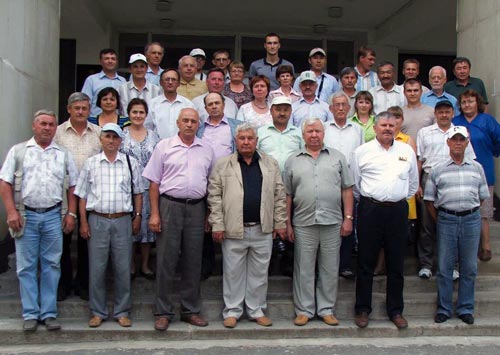 The meeting consisted of lectures on challenges and achievements in wheat breeding, including improvement of rust resistance. Alex Morgounov, of CIMMYT-Turkey and head of the International Wheat Improvement Program, gave an overview of the 8th International Wheat Conference, which was held in St. Petersburg during 01-04 June 2010, and reflected on the current status and latest achievements in wheat breeding. In general, the attending scientists noted that the Kazakhstan-Siberia Network is developing dynamically and that participating institutions are providing varieties for testing that display a higher performance of desirable agronomic traits in comparison with previous years, including resistance to rust (like Ug99). Additionally, breeders are working in harmony to: develop research methodologies; evaluate wheat rust diseases on an international scale; develop criteria to share credit for joint creation of varieties; and increase study on leaf rust, stem rust, and septoria leaf blotch. This shows that there has been an improvement in variety selection and that breeders take KASIB collaboration seriously. Impressed, a number of agencies not currently participating in KASIB expressed their desire to join the network.
The meeting consisted of lectures on challenges and achievements in wheat breeding, including improvement of rust resistance. Alex Morgounov, of CIMMYT-Turkey and head of the International Wheat Improvement Program, gave an overview of the 8th International Wheat Conference, which was held in St. Petersburg during 01-04 June 2010, and reflected on the current status and latest achievements in wheat breeding. In general, the attending scientists noted that the Kazakhstan-Siberia Network is developing dynamically and that participating institutions are providing varieties for testing that display a higher performance of desirable agronomic traits in comparison with previous years, including resistance to rust (like Ug99). Additionally, breeders are working in harmony to: develop research methodologies; evaluate wheat rust diseases on an international scale; develop criteria to share credit for joint creation of varieties; and increase study on leaf rust, stem rust, and septoria leaf blotch. This shows that there has been an improvement in variety selection and that breeders take KASIB collaboration seriously. Impressed, a number of agencies not currently participating in KASIB expressed their desire to join the network.